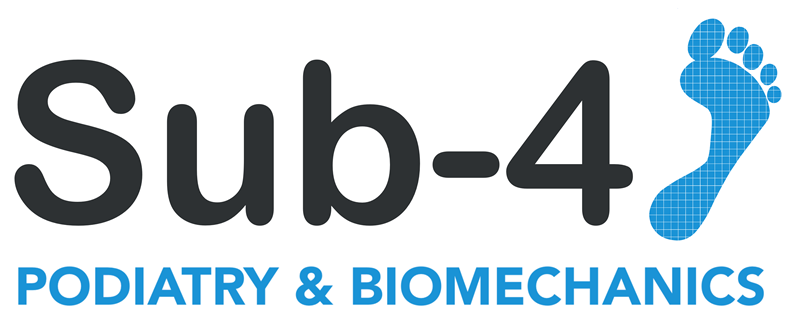Children’s Foot & Posture Issues
Sub-4 Health can help with a whole range of issues with your child’s feet and posture. Simply book a FREE no obligation consultation with Clifton or another of our experts for a chat about what to do next.
For here is some advice and information.
Children’s feet are very complex structures. Toddlers are flat-footed when they first start walking because the muscles and ligaments of their feet are underdeveloped. Shoes for a young child should fit properly and be replaced regularly. Toddlers should go barefoot regularly to encourage balance, posture and coordination.
There are 26 bones and 35 joints, held together and supported by scores of ligaments. A baby’s foot is padded with fat and is highly flexible.
Children begin to walk anywhere between eight and 18 months of age. Most toddlers are flat-footed when they first start walking, or tend to turn their feet inwards, because muscle strength and ligament stiffness needs to catch up to other development. The flat-footedness nearly always improves as the feet strengthen, but if not come in for a chat.
Children & Shoes
A child learning to walk receives important sensory information from the soles of their feet. Shoes, particularly those with hard and inflexible soles, can make walking more difficult. Your toddler doesn’t need shoes until they have been walking for a couple of months, and then only to protect their feet from sharp objects and trauma.
Have your child’s shoes professionally fitted, which should include measuring each foot for length and width. Children’s feet grow very quickly and their shoe size may need updating every few months. Shoes that are too tight can hamper your child’s walking and cause problems, such as ingrown toenails and bunions.
Flat Feet in Children
Normally developed feet have an arch, called the medial arch, formed by muscles and ligaments. For the first two years, your child’s feet will seem to have fallen arches. Flat feet are normal in a young child due to weak muscle tone in the foot, a generous padding of fat and loose ankle ligaments that permit the foot to lean inwards.
As your child masters walking, the ligaments and muscles will strengthen and the fat pads in the arch area won’t be so noticeable. By around five years of age, your child should have normal arches in both feet. However, if this is not the case seek advice from your local expert at Sub-4.
Feet that Turn Inwards
Many toddlers walk ‘pigeon-toed’, with either one or both feet turned inwards (in-toeing). In most cases, this is simply a sign of developing posture and balance, and should resolve by itself (without the need for medical intervention) somewhere between the ages of three and five years.
If the in-toeing is severe, seems to involve the leg and hip as well as the foot, or isn’t improving by the time your child is around one and a half to two years of age, see your podiatrist for an opinion or assessment. Excessive in-toeing may be caused by a variety of underlying difficulties, such as hip joint problems.
Feet That Turn Outwards.
Very occasionally, toddlers walk with their feet turned outwards (out-toeing). This tends to be more common in children who were born prematurely. In most cases, out-toeing resolves by itself as posture and balance matures, but see your podiatrist if you are concerned.
Children’s Foot Problem Symptoms
You should see your Sub-4 podiatrist if you are worried about your child’s feet or gait. Problematic symptoms may include:
Abnormally shaped toes.
Abnormal gait or posture.
Ingrown toenails (that persist or are painful).
Bunions or other deformities.
Stiffness in the foot.
Going over on the ankle.
Limping.
Painful feet and legs during activity or at nighttime.
Severe in-toeing or out-toeing.
Flat feet beyond the age of five years.
A sudden change in the way your child walks.
If your child isn’t walking at all by two years of age.
A clumsy child
Remember we will assess your child FREE at a no obligation consultation to advise whether orthotics are appropriate for your child.
